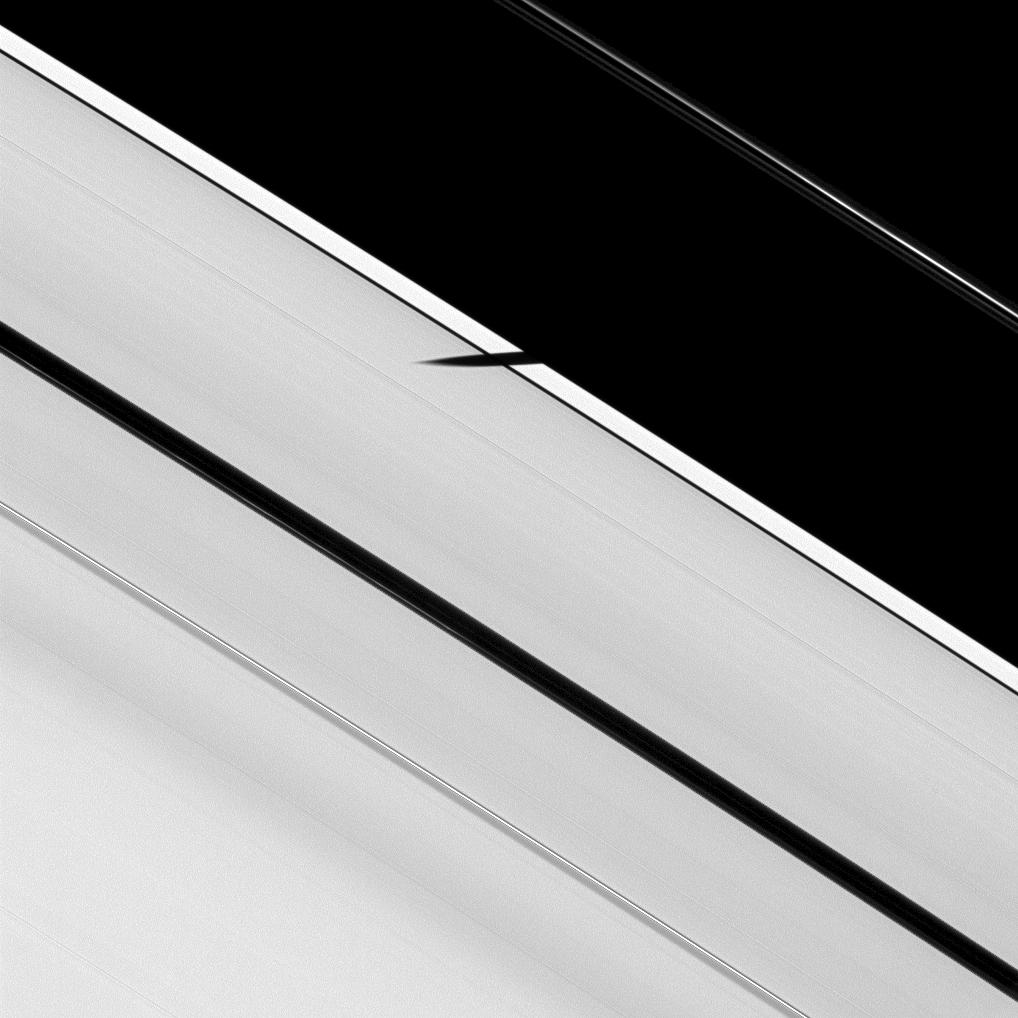Groundhog Day on Saturn

| PIA Number | PIA11650 |
|---|---|
| Language |
|
In this image of a Saturnian Groundhog Day, the moon Epimetheus has seen its shadow cast on the rings in a forecast of the future. Dramatic moon shadows will dance across the brilliant platform of the rings as the planet draws near its August 2009 equinox.
Epimetheus (113 kilometers, or 70 miles across) was the first moon caught by Cassini casting a shadow on the main rings in a series of observations planned to document this unusual sight, both for its spectacle and for the valuable clues the images might hold about vertical displacements in the rings. In the coming weeks and months, other moons will join Epimetheus in darkening the rings with their shadows.
In this image, Epimetheus is not visible, but it has begun to cast its shadow onto the A ring. As the angle of the ringplane decreases until it aligns with the rays of the sun at equinox, the shadows cast by the moons will appear more frequently and will stretch farther across the rings. Already spanning the Keeler Gap, Epimetheus' shadow reaches across about a third of the distance to the larger Encke Gap. The faint F ring can be seen on the right of the image.
The image was taken in visible light with NASA's Cassini spacecraft narrow-angle camera on Jan. 8, 2009. This view looks toward the sunlit side of the rings from about 27 degrees below the ringplane. The view was acquired at a distance of approximately 1.1 million kilometers (684,000 miles) from Saturn and at a sun-Saturn-spacecraft, or phase, angle of 42 degrees. Image scale is 6 kilometers (4 miles) per pixel.
The Cassini-Huygens mission is a cooperative project of NASA, the European Space Agency and the Italian Space Agency. The Jet Propulsion Laboratory, a division of the California Institute of Technology in Pasadena, manages the mission for NASA's Science Mission Directorate, Washington, D.C. The Cassini orbiter and its two onboard cameras were designed, developed and assembled at JPL. The imaging operations center is based at the Space Science Institute in Boulder, Colo.
For more information about the Cassini-Huygens mission visit http://saturn.jpl.nasa.gov . The Cassini imaging team homepage is at http://ciclops.org .
Credit: NASA/JPL/Space Science Institute
